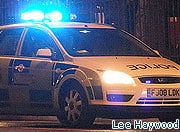Drug-drivers are facing a crackdown with the launch of new ‘drugalysers’ which are expected to be approved by the Home Office by the end of June.
The devices, which could be in use in police stations by the end of this year, can detect cocaine, ecstasy and cannabis by analysing saliva taken from a mouth swab of a suspect.
Roadside use of the machines by police patrols is also in the offing.
Concern
In 2008 there were very few prosecutions for drug-driving in Britain, compared with drink-driving.
However, the small number of drug-related prosecutions is thought not to reflect the extent of the problem.
A spokesman for the AA welcomed the news, saying: “We have been very concerned about the issue of drug driving for some time and we absolutely endorse any move towards roadside testing.”
Mike Penning, the road safety minister, said: “Drug-drivers put the lives of responsible motorists at risk and we are determined to ensure the police have everything they need to tackle this menace.”
Ban
In 2009 the Government launched a drug-driving campaign which targeted young men, the group most likely to drive while under the influence of illegal drugs.
A TV advert produced for the campaign points out that drug-driving penalties are the same as those for drink-driving.
Research by the Department for Transport’s Think! campaign found that those who drive under the influence of illegal drugs most often are men aged between 25 and 35.

